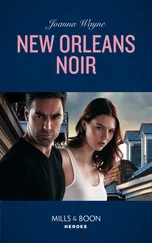Джон Краули - New Haven Noir
Здесь есть возможность читать онлайн «Джон Краули - New Haven Noir» весь текст электронной книги совершенно бесплатно (целиком полную версию без сокращений). В некоторых случаях можно слушать аудио, скачать через торрент в формате fb2 и присутствует краткое содержание. Город: New York, Год выпуска: 2017, ISBN: 2017, Издательство: Akashic Books, Жанр: Детектив, на английском языке. Описание произведения, (предисловие) а так же отзывы посетителей доступны на портале библиотеки ЛибКат.
- Название:New Haven Noir
- Автор:
- Издательство:Akashic Books
- Жанр:
- Год:2017
- Город:New York
- ISBN:978-1-61775-541-5
- Рейтинг книги:5 / 5. Голосов: 1
-
Избранное:Добавить в избранное
- Отзывы:
-
Ваша оценка:
- 100
- 1
- 2
- 3
- 4
- 5
New Haven Noir: краткое содержание, описание и аннотация
Предлагаем к чтению аннотацию, описание, краткое содержание или предисловие (зависит от того, что написал сам автор книги «New Haven Noir»). Если вы не нашли необходимую информацию о книге — напишите в комментариях, мы постараемся отыскать её.
New Haven Noir — читать онлайн бесплатно полную книгу (весь текст) целиком
Ниже представлен текст книги, разбитый по страницам. Система сохранения места последней прочитанной страницы, позволяет с удобством читать онлайн бесплатно книгу «New Haven Noir», без необходимости каждый раз заново искать на чём Вы остановились. Поставьте закладку, и сможете в любой момент перейти на страницу, на которой закончили чтение.
Интервал:
Закладка:
New Haven Noir
To New Haven, our town

Introduction
Noir Haven
New Haven is not a tourist town. You could come for the food trucks down by the harbor, for the loaf of olive sourdough at the Wooster Square farmer’s market, for a wild-eyed hockey game at the Whale, for concerts on the Green with entertainers whom you feared were dead. Some people do. More people come for something to do with Yale — students, staff, faculty, spouses of all kinds; the university has long arms — for something to do with the hospitals (split-liver transplant, anyone?), or for something to do with pizza. (I was surprised that the Sally’s/Pepe’s/Modern Apizza war didn’t feature more heavily in this anthology’s stories. It’s no joke.)
Our history is bound up with the original king-killers, three guys who signed the death warrant for the murder of King Charles I in 1649 and fled to New England, because even then (pre-Connecticut), payback was a bitch. In New Haven, we love Edward, Charles, and John — the regicides. We even have a trail named after them.
We had Billy Grasso, a garden-variety crook and shakedown artist. We had Charlie “the Blade” Tourine, imported from Jersey. The city had a long run of Midge Renault, who was only 5'3" and not any kind of Frenchman (Salvatore Annunziato), and he, short and crazy, was a one-man crime wave for many years. Midge was the kind of guy to track you down, beat you up, run you over with your own car, and then pick you up so he could hit you again. He’d bribed everyone in New Haven who could be bribed. If you couldn’t be bribed, he burned down your house or your restaurant. When he was in jail, the guards let him go home, just to be on the safe side. Everybody knows that story.
If noir is about corruption, absurdity, anxiety, the nightmare of bureaucracy, New Haven, with multiple universities and multiple clinics and multiple, and sometimes clashing, neighborhoods, is a noir town. If it’s about sex, money, and revenge, we have a lot of that, played out against the backdrop of the stately homes in East Rock, or the food carts ringing the hospital, or a bocce game played by trash-talking centenarians who believe that murder is a better solution than divorce. New Haven is a noir town.
We invented the first steamboat, the first cotton gin, the lollipop, the hamburger, and the automatic revolver. That’s noir country. We have a large, deep harbor and two traprock ridges (East and West Rock). People disappear into and under these geographic features often.
Our murder rate is up only a little, and way down from where it used to be. Our victims range from children to old folks. The number of shots fired is much lower. Our aim has improved. We have our favorite unsolved crimes: Our town’s Whitey Tropiano, a mobster shot dead on the street. The Yale senior killed and found on a quiet street corner (various amateurs have devoted years to this search; one guy is pretty sure it’s part of a 9/11 conspiracy, but he belongs in a different anthology). A lot of people were riveted by the headless torso found in an abandoned building, the handless arms found near the State Street commuter station. (See Chris Knopf’s story, which may owe something to this tragedy.) The pieces were part of a well-liked homeless guy and, eighteen months later, no one knows anything more about it.
In the place where I get coffee:
Guy buying a muffin: “You know the arms with no hands?”
Woman stirring her coffee: “You mean the legs in the train station?”
Man behind the counter: “It was Ray Roberson.”
Guy: “Bobo? I know Bobo.”
Woman: “Not now. Poor Bobo.”
The twelve people in the coffee shop stop what they’re doing and a young woman behind the counter starts singing “His Eye Is on the Sparrow,” and everyone either joins in or drops their heads. An older man in a suit clasps his hands in prayer.
We may be a noir town but, even though noir usually manages not to, we have heart.
The chance to bring together some of my favorite writers, in my adopted hometown (in every place I bartended, the cook or the manager carried a.38 in his waistband, and I can still make ten kinds of boilermakers), was a joy and a privilege. Every single story is a noir gem, among them:
Alice Mattison breaks the mold. In her Lighthouse Point Park story, she gives the femme fatale a twist from which I hope the genre never recovers. This time, the hopeful, lovesick dim bulb is a young woman and the sexy, manipulative devil with the irresistible body is a man. Mattison throws in a double twist, in which the dreams of glory and money are all at the most unremarkable levels.
Chandra Prasad’s “Silhouettes” takes classic 1940s noir for a perverse spin around a drought- and war-addled Wooster Square, far from its modern charms. The young man with a limp is shy. The girls are flirts. The boss does seem to be looking, all the time. The wife doesn’t know much. All I can say is, Strouse Adler Corset factory — and I didn’t see that coming.
Michael Cunningham and John Crowley take us to noir-beyond-time, to worlds that have a whiff of the uncanny. Cunningham creates a nightmarish hotel of disturbances, “The Man in Room Eleven.” Crowley assaults all of our senses, Clockwork Orange — style, in his exploration of a Yale we haven’t seen yet.
The writers in this volume find noir in the seventies, the eighties, and the nineties, from college boys to Italian widows. Roxana Robinson finds noir in the world of biographers and Beinecke Library. Classic noir returns to our modern lives in Sarah Pemberton Strong’s “Callback,” in which we get the no-good dame, theatrical rivalry, and a stage-door romance as well. In “Evening Prayer,” Stephen L. Carter lets us see truth emerging as a knife in the heart. In New Haven Noir , everyone lies — and when they tell the truth, it’s even worse.
If you are an optimist, noir may be an antidote, a crisp, dry balance for your sunny outlook. If you are a pessimist (or, as we say, a realist), noir is your home ground, your tribe. It’s not just that you expect ants to come to the picnic; you know damned well that there will be ants at the picnic. When they come, you’re relieved. When they crawl up your brother’s leg, you’re reassured and possibly delighted. But the other side of noir is the moral center. The center may be shabby, frayed, and in serious need of a facelift, but it is a center. It’s not necessarily heroic. It’s likely to be cynical, and its resilience is not the showy kind. Mean streets, as Raymond Chandler once said, but not mean.
That’s New Haven.
Amy Bloom
New Haven, CT
May 2017
Part I
Skulls & Bones
Crossing Harry
by Chris Knopf
Union Station
People tend to not like me because they think I smell bad, and I talk a lot, though not to them, but to other people they don’t know are there. I personally don’t see a problem with this, though there’s always somebody trying to fix me, or get me inside some building, or stick a bunch of drugs in me to make me better. When I don’t even think I’m sick from anything.
Though usually I’m pretty much left alone, because as a general rule people don’t even see me.
My house is this nice little spot under the railroad tracks that mostly keeps out the rain and snow. I got it from a guy who died there, and I only had to drag his body out to the street to take possession, and the dead-guy odor went away pretty quickly. I have room for my sleeping bag, books, lantern, some extra clothes for the cold weather, and other things, like a bag of bottles and cans I usually forget to turn in, and a cat that doesn’t take up hardly any space at all.
Читать дальшеИнтервал:
Закладка:
Похожие книги на «New Haven Noir»
Представляем Вашему вниманию похожие книги на «New Haven Noir» списком для выбора. Мы отобрали схожую по названию и смыслу литературу в надежде предоставить читателям больше вариантов отыскать новые, интересные, ещё непрочитанные произведения.
Обсуждение, отзывы о книге «New Haven Noir» и просто собственные мнения читателей. Оставьте ваши комментарии, напишите, что Вы думаете о произведении, его смысле или главных героях. Укажите что конкретно понравилось, а что нет, и почему Вы так считаете.
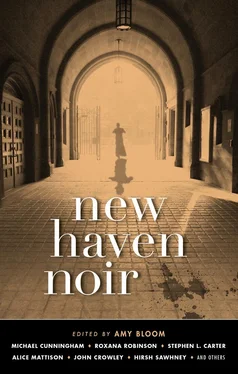
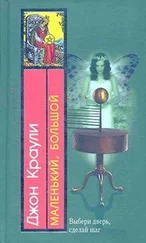

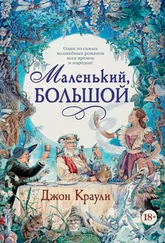
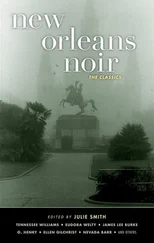
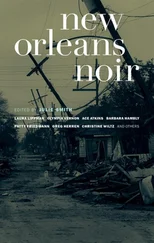
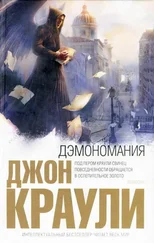

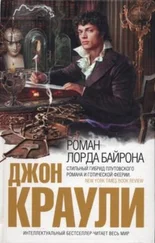

![Джон Краули - Ка - Дарр Дубраули в руинах Имра [litres]](/books/406053/dzhon-krauli-ka-darr-dubrauli-v-ruinah-imra-litre-thumb.webp)

